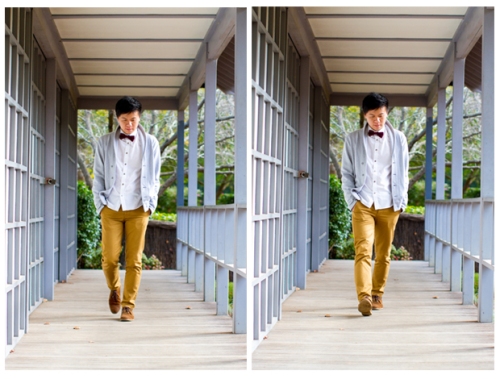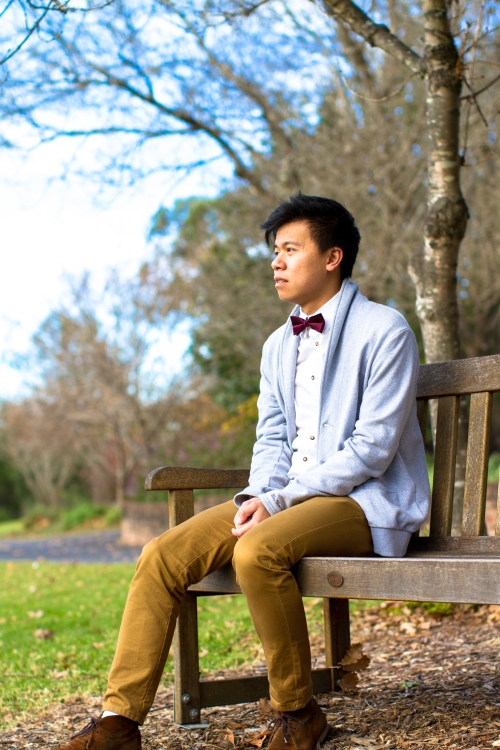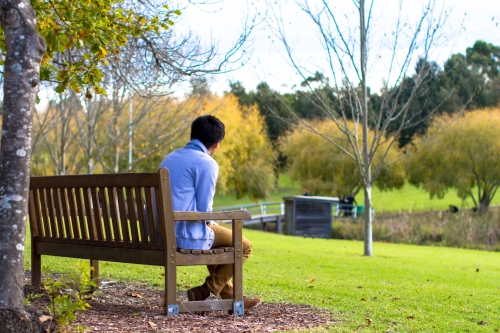Month: June, 2012
June 26, 2012
Call me when you get here

Autumn is my favorite season, photographically speaking. It’s just a beautiful time of year where the trees have not yet wilted from the winter cold, the leaves rustle and crunch in the wind and the color palette of autumn reds, yellows and oranges everywhere is extraordinary.
On a beautiful Autumn day in May, the boyfriend and I went to visit Fagan Park, in Sydney’s North West. Sitting on 55 hectares of land, this park is beautifully landscaped with gardens inspired from the likes of Japan, China, Africa, the Mediterranean and the Dutch. Simply gorgeous!
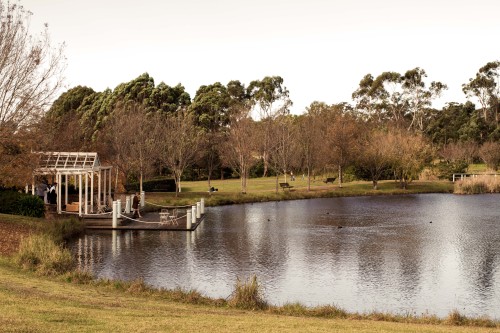
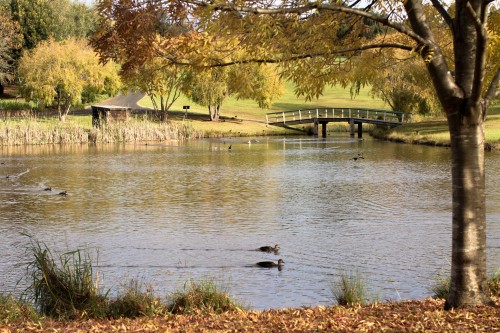





June 24, 2012
animal kingdom
So, I know I haven’t updated my blog in a while, but since I started my new job, I guess I’ve just been too tired to do anything [PERIOD].
But here we go, these photos were taken on April 30; the day before I started my new job. The boyfriend and I visited Taronga Zoo (just because we could and it was a Monday which meant it wasn’t going to be jampacked with tourists, families and little rascals running a muck!) It was such a beautiful sunny day; a little chilly but since it was nearing winter, it was expected.
I’m pretty sure the last time I went to the zoo would have been back in primary school. It was nice to explore the zoo at our own pace minus the numerous work sheets and the feeling of being paraded around like prized cattle.
My favorite animal is the giraffe, they’re just so beautiful, so as you can imagine, we spent a good hour hanging with our long-necked friends.


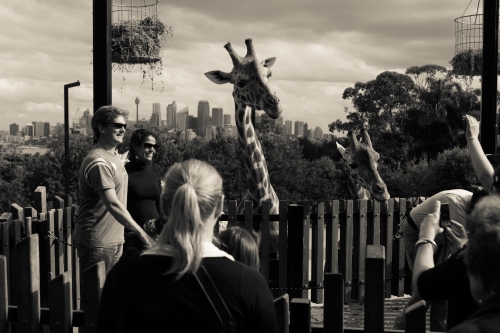
Here are some photos I took from the zoo, meet our new furry friends.

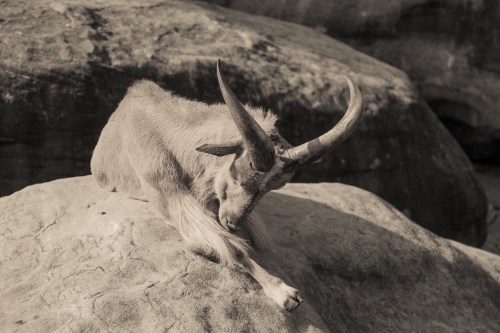
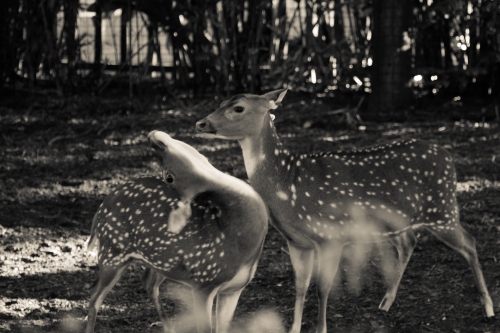


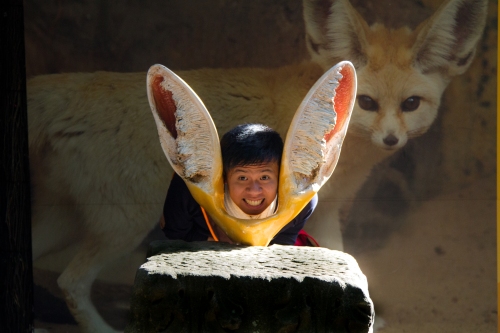
June 14, 2012
HDSLR Cameras have changed the Film Industry and it’s here to stay!

By Daniel Karjadi
It’s not exactly a new sensation or technology but these cameras still make any viewers or users drop their jaws. The industry that was birthed from Photography has come around and back to its roots, with using Still Cameras to create moving images. The birth of the HDSLR has given way to a new age of cinematography and we are no longer in the era where producing high quality images need to be expensive. I would like to explore a brief introduction to movie cameras and the revolution of the HDSLR within the Industry. This will include a few words and a few videos that compare the qualities of these cameras to Industry Grade 35mm Cameras.
Movie Cameras
The initial Movie Camera is at its most basic level, a photographic camera that takes a certain amount of photographs on a strip of film continuously. The 35mm Camera gave light to the classics of cinema right up to the present day. In fact, the majority of any films coming to the cinemas near you were most likely shot on a 35mm film camera. These cameras have recently been replaced by what we now call a Video Camera which is Digital either recording onto a HDD or a magnetic tape cassette. But for professional purposes however, movie cameras like the 35mm film cameras is still being used and produced today for productions as big as a high-budgetted feature film. Different to that of your normal still cameras, it takes a series of images, which we call frames and after the production it is screened through a movie projector at a chosen speed which we call frame rate. And viewing the images, a person’s eyes and the brain merge the separate pictures together at the chosen speed to create an illusion of a moving image.
The technical details of 35mm film cameras or any other movie cameras are actually quite simple. Like the Photographic Cameras, light enters from the lens into the camera’s gate or shutter and imprint onto the film stock. The gate usually have a rotating mirrored shutter that alternatively passes light to the film stock and also to the viewfinder for the camera operator to be able to see what he is filming.

These movie cameras off course were very expensive and soon got replaced by video cameras as cheaper alternatives for families, teenagers and even independent filmmakers that cannot afford anything higher. Smaller alternatives like digital video cameras became the main choice for independent filmmakers as the big 35mm film cameras were too expensive to buy or hire for any of their productions. The problems with these Video Cameras are that at the lower price range what you get is a small sensor camera, no ability to change the lenses and the quality won’t have any production value. For anything decent you will be paying a high price and still be dealing with things like tape recordings or a relatively small sensor still. If you wish to purchase a high quality digital camera with a nice sensor and the ability to change lenses and a nice picture output, you will be looking at about 40,000 dollars and above. Now the price gets a bit closer to the higher end 35mm film cameras. This gave birth to the revolutionary HDSLR cameras by Canon, Nikon, and Panasonic etc.
Why HDSLR?
For centuries Kodak and Fujifilm have had a duopoly on the filmmaking industry and the 35mm film have been without any rivals. Though it may have taken a bit of time but just like the film photographic cameras have been replaced by the ever growing popularity of Digital Cameras, the digital technology have now come to revolutionized Hollywood.
With the 5DMK2 priced now as low as 1900AUD and the 7D as low as 1200AUD and even the 5DMK3 can be found at 3800AUD, it certainly is the cheaper alternative and the answer to all Independent Film Makers. But what about the camera itself that can make it the better option? How is it better to purchase these cameras than to spend the same amount of money to hire a bigger camera?
These cameras are found to be the closest thing in the world to the 35mm Film Cameras by DOPs and Film Makers in the industry. The large Sensor that these cameras have is a big plus for the industry giving the user a 14-bit A/D resolution power and 36x24mm effective sensor size. And the ability to give a 35mm effect in a small hand held camera and only cost all under 5000AUD to get it up and running. This in itself is a remarkable shift in the industry and a good enough reason for anyone to at least try it out and see for themselves. DOPs and Filmmakers have also noted that for independents, filming within the public becomes much better with these cameras as people have become more relaxed around smaller cameras than what you would normally use such as the Sony EX3. And that’s not all with the advantage of the small size; it can also increase creative flexibility. It allows the user to be more creative in terms of angles and positioning which would have been much more difficult and required more funds to build a rig or a system for larger cameras. With these cameras you are able to get interesting positions including rigging it overhead, ceilings or even placing it within tight cupboards and alleyways. And with the recent film shot by Shane Hurbult, Act of Valor (2012), the Canon 5DMK2 were rigged to helmets guns and vests to give a unique angle as soldiers run past bombs and bullets. It also allowed Shane to have it on a small hand held rig and be in the surrounding of all the actions going instead of being far away and zooming in.
Visit this blog to read about Shane Hurlbult’s cost comparison of the HDSLR to the 35mm Film.
Canon’s 5D/7D Family vs. 35MM Film: A Cost Comparison
Limitations?
Even with the reasons above, the HDSLRs were still a camera originally built for photography and therefore will still pose some limitations when it comes to filmmaking. Sony’s response to the cameras were “A Video camera needs to perform, act and be usable like a video camera, and a stills camera needs to feel and work like one, if you adapt one to the other, you get a compromise.”
The HDSLR movement needs to be understood as an accidental one. The large CMOS Sensor have been advancing for the past half decade for photography but never thought it could revolutionize another industry. Canon’s initial intention was to create a Professional series camera underneath their 1D series range that could be used for Journalists. The video function was initially thought about for Photojournalists to create Video Logging of their trips or even have a snippet of videos while they record events all over the world. It was then taken by a few independent film makers and wedding videographers to a whole new level. Canon then realized what they were making or made was much more than the photography camera they thought it would be. Realizing this, they quickly made improvements to the camera and released a firmware update that would support the filmmakers further more. Though know that Nikon was actually the first brand to venture into HD Video in their early model of the D90, but it was only 720p and the results were not very good.
So the first limitation of the Canon EOS Series HDSLRs are the limits on the continuous settings. The body will over heat over 12 minutes and shuts the recording off around that time. The Canon 5D seems to handle it much better while the 7D seem to over heat and needs to be cooled down before further using the camera. Also with its large sensor especially in the 5D, focusing becomes quite difficult as you are using photography lenses. The depth of field in the 5D with photography primes is within millimeters! And the focus rings on photography cameras seems to be endless. Another limitation is the rolling shutter of the camera, since its not built for film making, the camera creates these jello effect as movement gets faster and faster sideways. The monitor screen size also does not help at all for focusing or for the Director to see what is being captured. And the LCD factor of the screen makes it very hard to see in bright conditions.
Are all of these Limitations that should drive most wise filmmakers away? The answer is no, though it may require more funds to work around the limitations, the total cost is still fairly below what you would expect from higher end cameras. The limitation of the 12 minute recording is a problem may be for wedding videography, but for film making, recording over 12 minute continuously is rare and a bit un necessary. Even for wedding videography, having two cameras present should eliminate those limitations with the ability to edit between cameras. And Canon have now developed the 5DMK3 which allows users to record up to 25 minutes, which is ridiculous as for most CF cards, that amount of video recording is over the limit.
As to the issue of focusing, practice makes perfect as they say. It’s a perfect training ground for independent and beginner filmmakers. If you are able to master the focusing in the 5D, any cameras become a breeze for you and no it’s not an impossible thing to do. With affordable focus pulls and gears available online now, for under 300AUD you are able to purchase one focus ring and gears for your 5D. It makes the focusing much easier and eliminates almost the issue of the photography lens focus ring. To avoid the rolling shutter or jello effect of the camera there are now softwares in post to fix that issue, but to avoid it totally, as a film maker know the limitations of the camera and do not record fast movement quickly. If a scene needs to record a person running, do so in front of the character and run backwards, and you will still get a crisp image.
For some Filmmakers, these limitations are overlooked plainly by the fact that they get the ISO function in these cameras. Something that have been said to be the better version than ‘Gain’. These little weapons can capture more light than our own naked eye, being able to film outside with no lights and still get a beautiful image out of the camera is something that most Video Cameras like the Sony F35 and even the Red Cameras aren’t able to do. The detail that it still gets in pitch black still astounds most filmmakers and with the release of the 5DMK3 and its ability to go all the way up to 12800 ISO with minimal noise, more people are still to be shocked.
The video below have shown that Industry’s most renowned figures have seen and compared the HDSLR to the 35mm Film cameras and was surprised at the result. It is a video worth watching and the result will drive you to a point where the HDSLR cameras are now a necessity for any film makers.
Philip Bloom – The Great Shootout!
Shane Hurbult is one of the industry’s figure that have worked with the HDSLR for quite some time and develop ideas for rigs and work arounds to make the cameras a better video camera.
Have a watch at this video on to how to combat limitations.
Here to stay?
So is the DSLR phenomenon a passing fad or is it an option to stay? The influence of the cameras are slowly spreading to the world, high and low, far and wide, from low budget to Hollywood and from commercials to TV series. The HDSLRs may have started a new trend, but they are not going to be the new face of the industry. They are definitely here to stay for the low budget Independents and the student filmmakers though. It fills the gap of quality between independents and Hollywood in some way or the other. But what the HDSLR have started is a whole new wave of cinematography and cameras. With the big feedback of the Canon EOS series, Canon designed and released a new sector in their company called the Canon Cinema Series. They have created based on the HDSLRs, cameras like the C300/C500 and even the 1Dc (Cinema). These cameras will now compete against the Red Cameras on an equal level and so far have seemed to be the better option being cheaper and a much better quality. In what capacity will the HDSLR find their home in the industry? Well, its here to stay as a second unit camera or as a first unit camera in smaller productions. Never the less we have to respect the technology and what has come out of it. A talented director and actors with the 5D in hand is now a recipe for success with any good script.
Work Flow
So now you either have one or want one. How do you use these cameras efficiently and transform it into a video camera?
Shane Hurbult recently released a blog about his workflow and post-production on Act of Valor (2012). Visit this address here:
“Act of Valor” Workflow and Post Production
These videos on Vimeo features Philip Bloom, who is a renowned user of the HDSLR and have been accredited as the master of these cameras knowing them inside out just like other figures like Shane Hurbult and Vincent Laforet.
Vimeo – Introduction to DSLR Cameras
Vimeo – Setting up your DSLR
But at the most basic level, these cameras need a lot of management and rigs to make it a usable and efficient machine in a bigger production film. First of all, in a production where multiple HDSLRs are used it is wise to label these cameras as A/B/C etc. Label them with tape over the body just so you won’t forget, this will make slating much easier and editing as well knowing which cameras were used for which particular shots. By labeling the cameras A/B/C, we have to label the CF Cards as A1/A2/A3 or B1/B2/B3 etc. Basically, these cameras must be treated like a film camera, and the CF cards to be like a film stock. Everything should be labeled to avoid things like overwriting cards or a bad continuity notes. Each card should be placed upside down in their case once used so we know that is not an empty card. Once all of this is understood and organized, the cameras needs to be programmed individually to match these settings. What I have done in the past is that every A Camera’s file starts with the number 1xxx.MOV, and all the B Camera’s file starts with the number 2xxx.MOV and so forth. I have found this to be quite useful when editing, as I know where to look for certain files and no files have the same name. This is easier in the 5DMK3 as you can rename and program in the camera menu itself but if you have the 5DMK2 and the 7D, you have to program it yourself.
Now we have a great set up for the cameras. What is necessary in the bag for film making? For a budget and a run and gun filmmaking, a camera and a lens is all you need but if budget was thrown in there are a few equipment that could ease your job. First of all, the lenses, these are usually personal taste but for me so far, all I ever seem to need is four lenses: Canon’s 24mm range, 50mm range, 135mm range and a good zoom lens like the 70-200mm or the 70-300mm. With these lenses, all areas are covered. Out of all the above lenses, the 50mm on a 5D is something that I have used more over the others. Working off a prime Lens and not a zoom lens is a good way to learn composition and practice and what you get out of it is a cleaner and sharper image. Other accessories include a tripod; monopod and a nice cage/shoulder rig with follow focus. A cinematographer once said to me, for every cinematographer a camera can always be hired, lenses can always be hired but a good tripod and monopod should never be hired. The tripod should be one that you are most comfortable with and use it for every camera and production.
Last but not least, post-production workflow. These cameras record onto a H264 format meaning its very compressed. A good way to treat these files is to turn everything into Apple Proress 422HQ before editing any of the footage. Softwares like MPEG Streamclip and Media Encoder Cs5 is a good way to start.
For further workflow technique, check out this video.
I hope this blog has enlightened you to the world of HDSLRs and also on how to work with these funky new little cameras!


